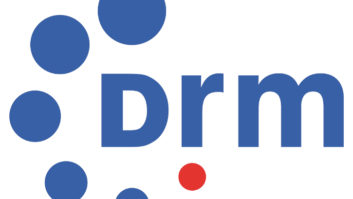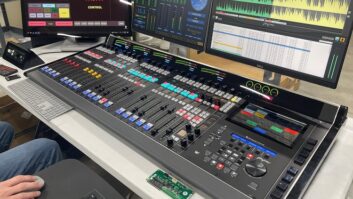Rainy Amsterdam Photo: Raffaella Calabrese

Click on the Image to Enlarge
AMSTERDAM — Despite the cool, rainy weather here in Amsterdam, IBC2013 has managed to keep the heat on, offering a full-immersion into the world of electronic and broadcast media and much more.
Highlights on the radio side include Friday afternoon press conferences by both Harman Studer and Genelec to tout their latest gear. Studer showed a number of new updates, which include the addition of Harman’s Lexicon processor effects through an integrated VistaFX engine and expands the applications for the console, says the company. Harman Studer also announced the V6 software for its OnAir range of consoles, which includes automatic microphone mixing functionality for radio, Studer VoiceMix.
Meanwhile, Genelec unveiled the latest additions to its Smart Active Monitor range, with the 1237A and 1238A models. The 1237A/1238A are three-way SAM monitors, which the firm says, have onboard intelligence to allow them to automatically adapt to their environment by tuning the frequency response to compensate for acoustical room influences, as well as achieve perfect alignment of levels at the listening position. Both monitors can be either free-standing or flush-mounted.
In other product news, Rohde & Schwarz introduced the new THR9 liquid-cooled high-power FM transmitter, which ranges from 5 kW to 40 kW and is digital-ready. The THR9 is compatible with the R&S Multi-TX design, which involves integrating multiple transmitters into a single rack. In combination with a liquid-cooling system, this helps reduce the amount of space required, says the company. It adds that a single THR9 rack can hold as many as four 10 kW transmitters.
Fraunhofer IIS introduced audio codec technology for the next generation of digital radio with Extended HE-AAC (xHE-AAC), the latest upgrade to the MPEG AAC family of codecs. Digital Radio Mondiale (DRM) is the first global broadcast standard to adopt xHE- AAC. According to Fraunhofer, xHE-AAC is the first MPEG audio codec to combine speech and general-purpose audio coding in a unified system. This, says Fraunhofer, allows for high quality delivery of any type of audio content at virtually any bitrate.
DRM broadcast encoder solutions based on Fraunhofer’s ContentServer technology, as well as third-party implementations, already support xHE-AAC. Broadcasters can select xHE-AAC after a software upgrade to their existing equipment. All DRM receiver chipsets belonging to the initial mass-market generation include xHE-AAC from market launch. DRM radios based on these chipsets will be available in 2014.
According to DRM Chairman Ruxandra Obreja, the enhanced coding greatly improves the quality and maximizes the opportunities for broadcasters. “With the new codec we are jumping on the bandwagon and becoming more efficient and maximizing opportunities for broadcasters who will be able to transmit more complex programs at a higher quality.”
During the DRM event held at the Nautel booth the company emphasized the importance of availability and market penetration of DRM receivers. “In the past, we’ve focused on the technology, but let’s be honest, it was never the DRM technology that held us back — it was receivers,” said Chuck Kelly, director of sales, for Nautel. “We needed to build the demand for receivers, so that receivers are introduced in quantities that permit affordable prices,” he said. “Now that All India Radio has invested more than $60 million in DRM technology, and will be providing coverage to an estimated 1 billion people in the entire country of India, things are changing.”
“They’re working with electronics manufacturers in India to assure that new low cost designs will be available which meet the needs of the Indian public, handheld, table radio and car radios. For now, they’ll satisfy the needs of the Indian public, but we’ll encourage these companies to build more, to leverage quantities of scale, and begin exporting these radios to the rest of the world.”
Kelly went on to say that DRM also offers features to form the basis of a regional disaster warning system which has the power, the speed and the cost effectiveness to change the way these sorts of disasters are dealt with, giving people the necessary time to evacuate.
In other news, Nick Piggott, Chairperson of RadioDNS, was on hand at the EBU booth to highlight the latest advances in hybrid radio. According to Piggott, the project continues to grow, and attract interest from an increasing number of broadcasters and manufacturers and that he is seeing that reflected in the general ecosystem around hybrid radio.
“In particular,” said Piggott, “more of the companies who provide technical services to radio broadcasters are now including hybrid radio services in their portfolio, and we’re seeing more broadcasters take advantage of this. Most recently, Paris-based VizionR started providing hybrid services for Radio France, and Dutch company Pluxbox are doing the same for state broadcaster NPO.”
In-car listening is vitally important to radio, he explained and said that RadioDNS was pleased to be working with automotive manufacturers to include hybrid in their radios. At this year’s IBC, RadioDNS demonstrated an in-car radio from Visteon, a major supplier to multiple manufacturers, working in tandem with a smartphone to deliver hybrid radio.
“RadioDNS’ role is to provide information and education to broadcasters and manufacturers, to help them understand what hybrid means to broadcast radio,” he said. “We encourage open discussion, and I’m very pleased to see the extent of our transatlantic co-operations, which can only help all of us in a globalized economy.
Also during the show, the EBU announced that a group of international broadcasters has been working together to standardize radio for smartphones for all standards. EBU and Global Radio are both part of the organization.











